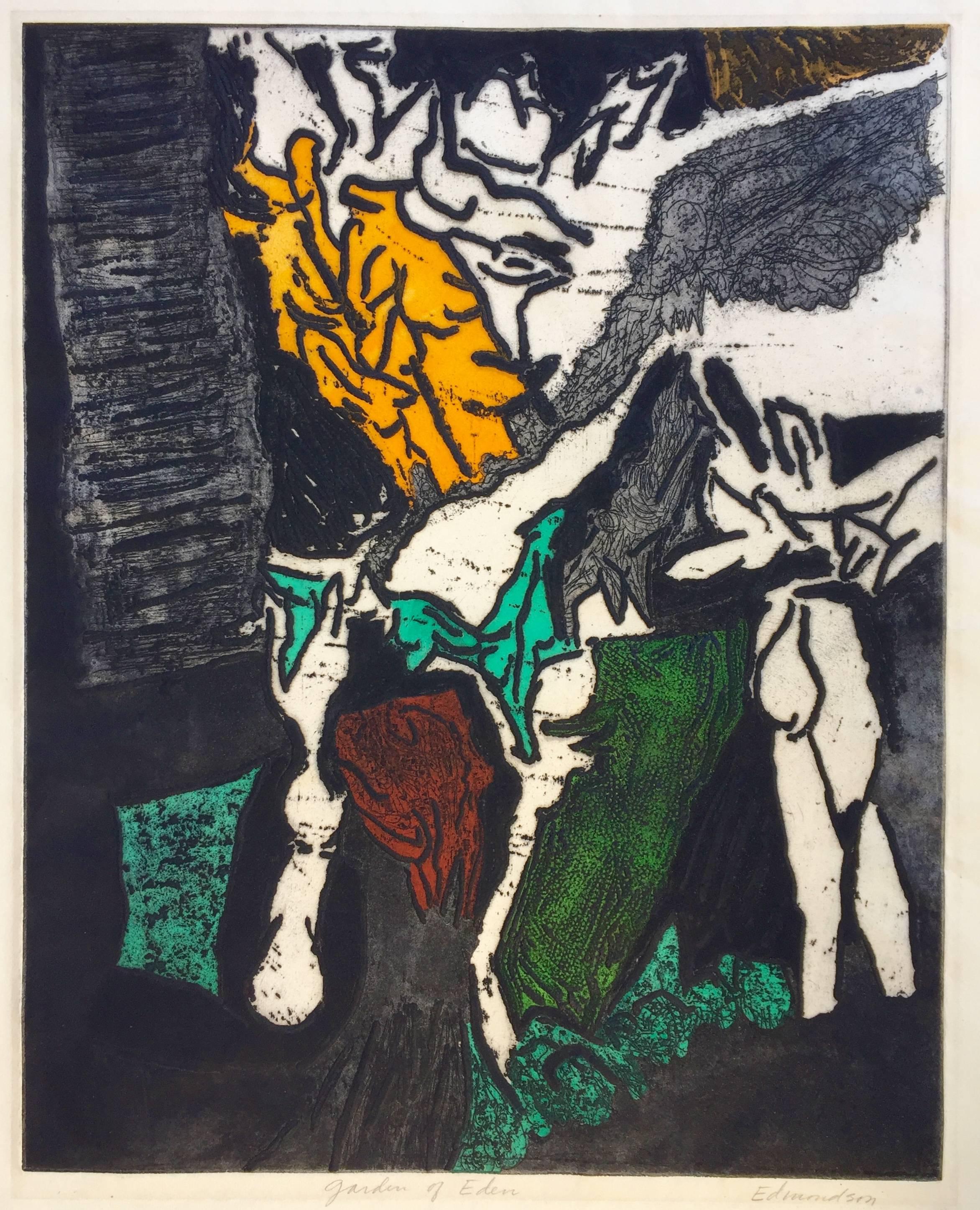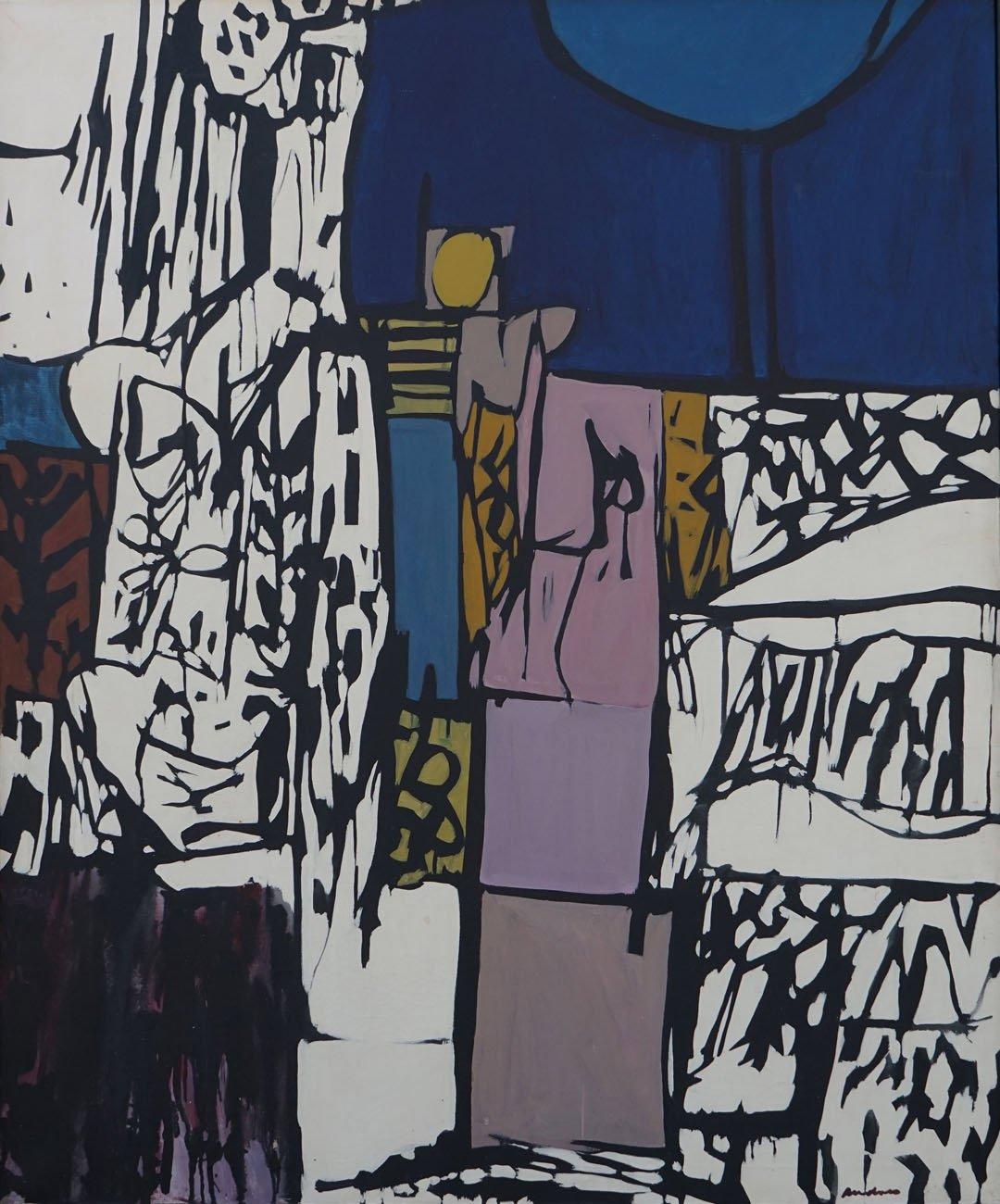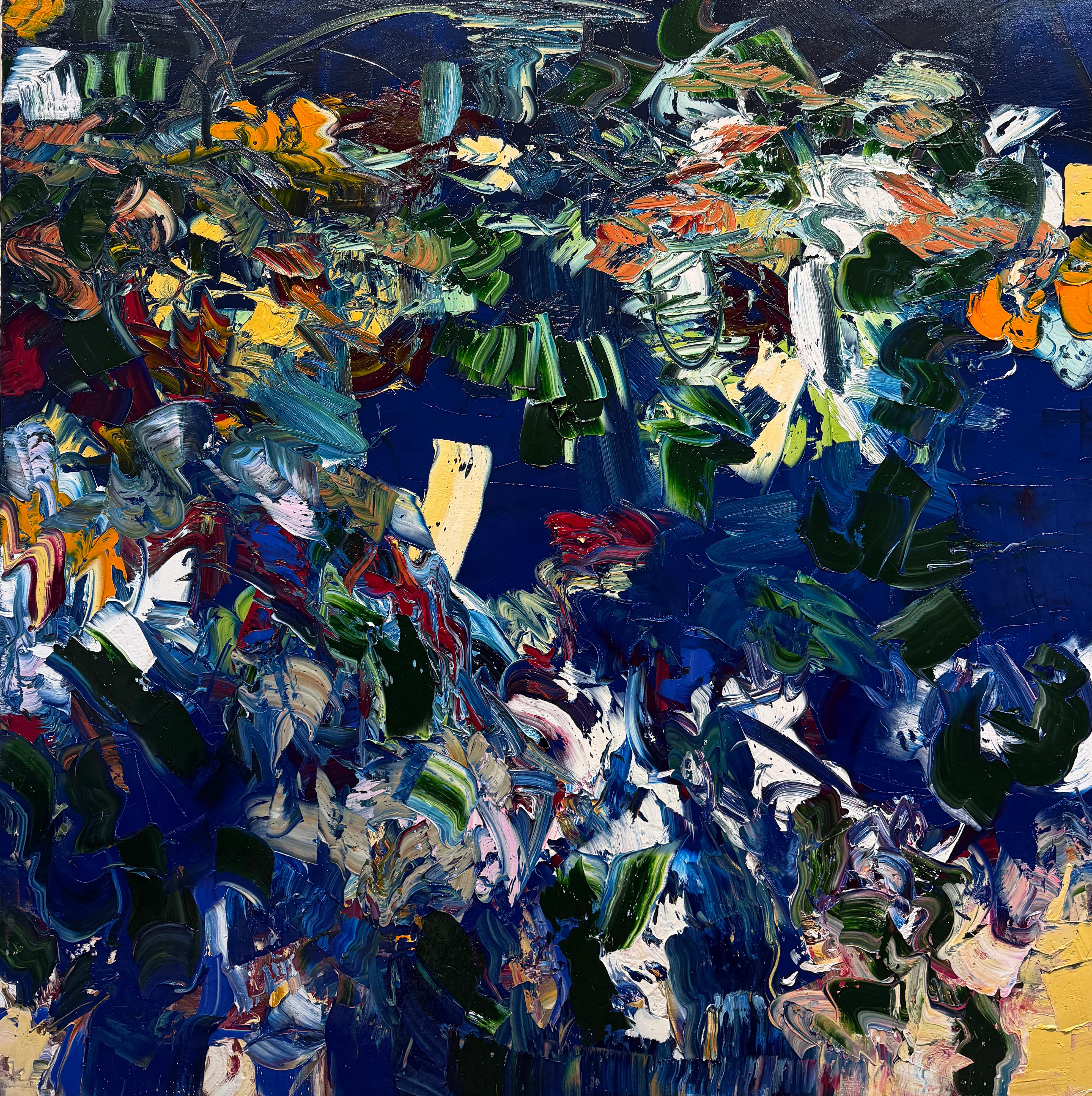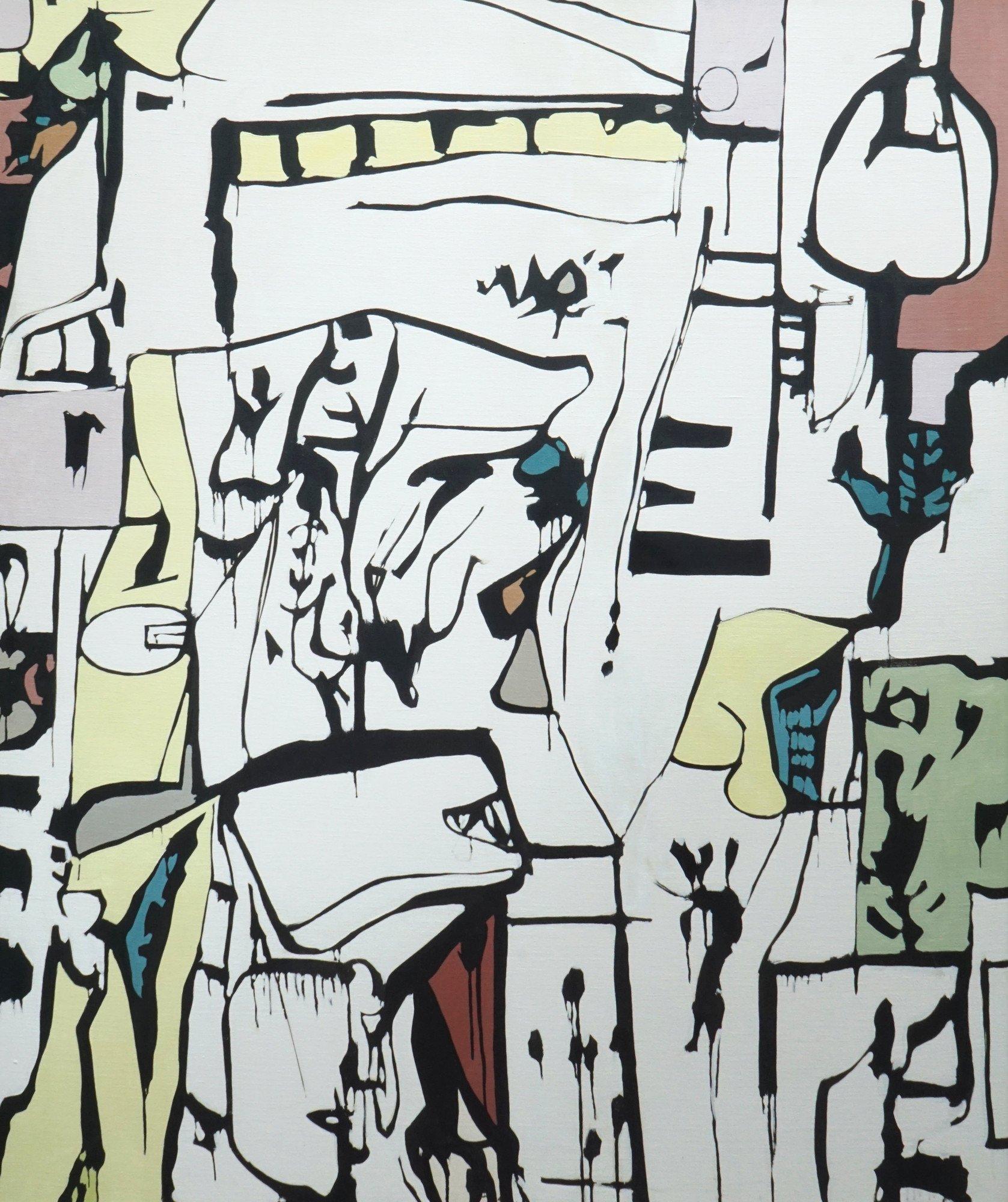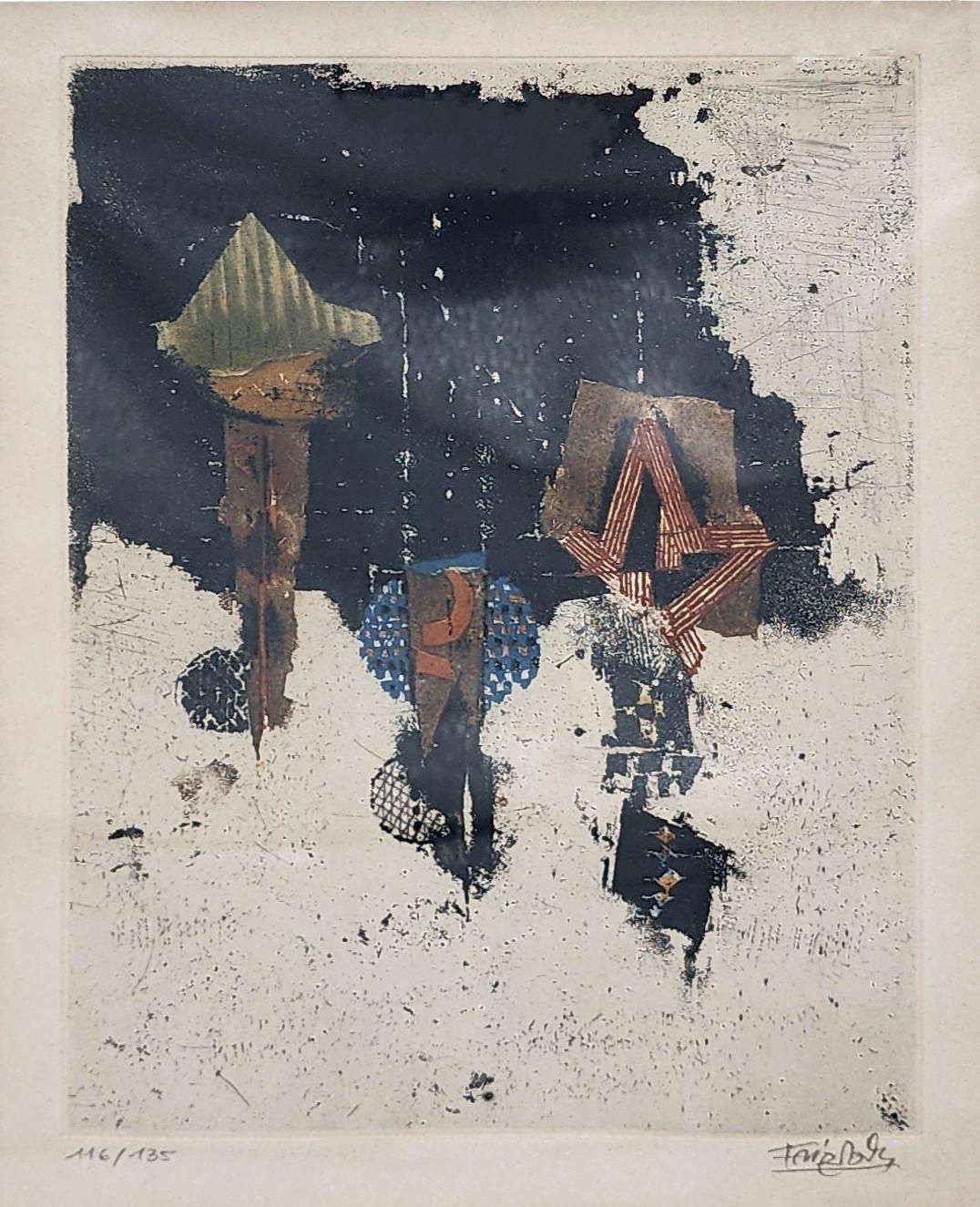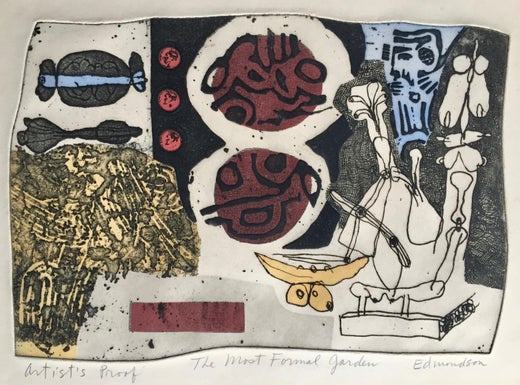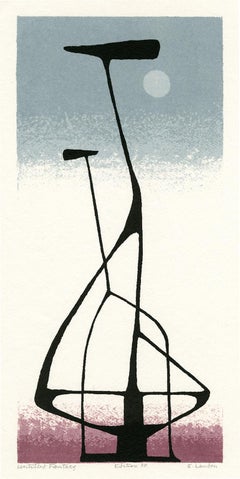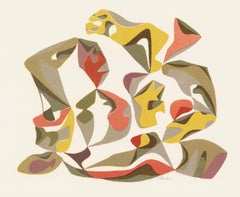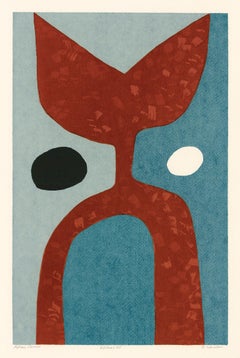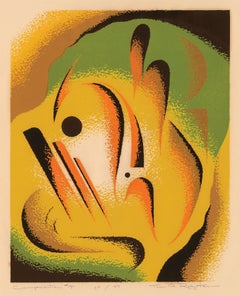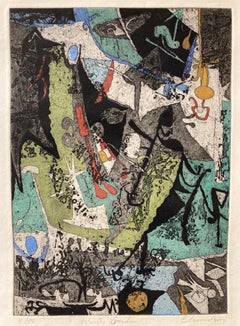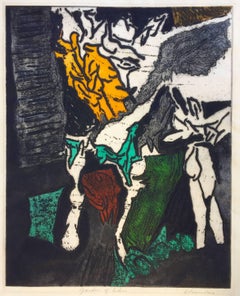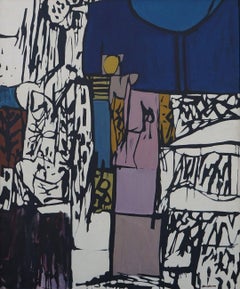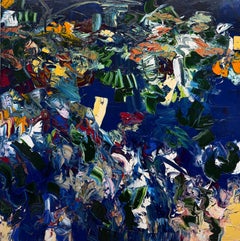Leonard EdmondsonWinter Garden1957
1957
About the Item
- Creator:Leonard Edmondson (1916 - 2002, American)
- Creation Year:1957
- Dimensions:Height: 11.19 in (28.43 cm)Width: 7.75 in (19.69 cm)Depth: 0.01 in (0.26 mm)
- Medium:
- Movement & Style:
- Period:
- Condition:
- Gallery Location:Myrtle Beach, SC
- Reference Number:Seller: 1003581stDibs: LU53234387382
Leonard Edmondson
Leonard Edmondson began his career at the University of California at Berkeley, where he earned a Master of Arts degree. After service in the U.S. Army Military Intelligence, during World War II, Edmondson embarked on a distinguished teaching career that spanned five decades and culminated in his position as Chair of the art department at California State University Los Angeles. A renowned printmaker whose work was informed by the experimental printmaking techniques of Stanley William Hayter, Edmondson also worked in a range of other media including oil paint, watercolor and collage. By 1950, Edmondson’s work had evolved from figurative representation into abstraction, in what he cited as a journey of inspiration, discovery and meaning. His distinctive style is inspired by the abstract surrealism of Paul Klee (which he had viewed in Europe during World War II) and the intuitive expressionism espoused by Hans Hofmann. Edmondson's vernacular invokes in his own words ‘almost remembered' forms, feelings and spaces, “This vocabulary manifests itself in a dynamic structure where color responds to the size and position of shapes and reinforces the intent of the composition. My painting is not art of rebellion but one of discovery and sharing.”
- ShippingRetrieving quote...Shipping from: Myrtle Beach, SC
- Return Policy
More From This Seller
View AllMid-20th Century Abstract Abstract Prints
Screen
Mid-20th Century American Modern Abstract Prints
Screen
1970s Abstract Abstract Prints
Screen
1940s Abstract Abstract Prints
Screen
Mid-20th Century Abstract Abstract Prints
Screen
Mid-20th Century Abstract Expressionist Abstract Prints
Etching, Aquatint
You May Also Like
1950s Abstract Expressionist Abstract Prints
Intaglio
1960s Abstract Expressionist Abstract Prints
Intaglio
1960s Abstract Expressionist Abstract Paintings
Acrylic
2010s Abstract Expressionist Abstract Paintings
Canvas, Oil
1970s Abstract Expressionist Abstract Paintings
Acrylic
1970s Abstract Abstract Prints
Etching

